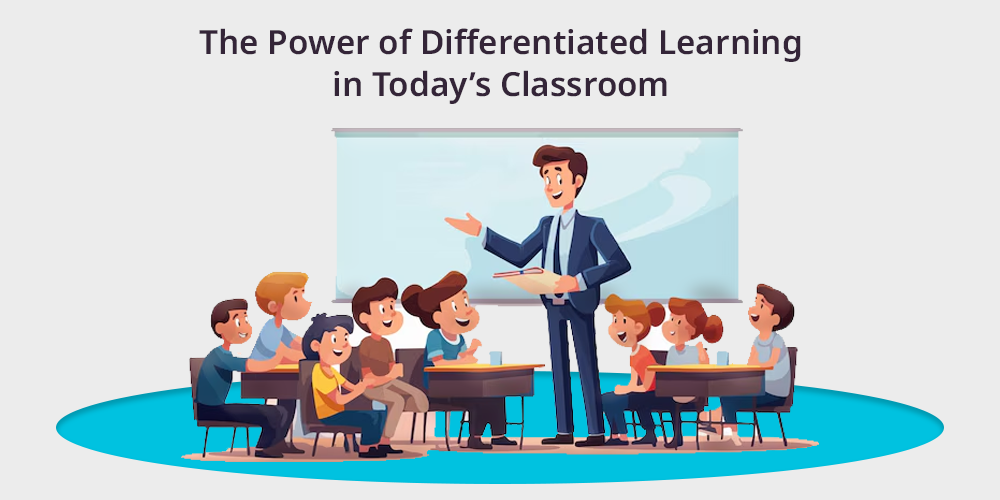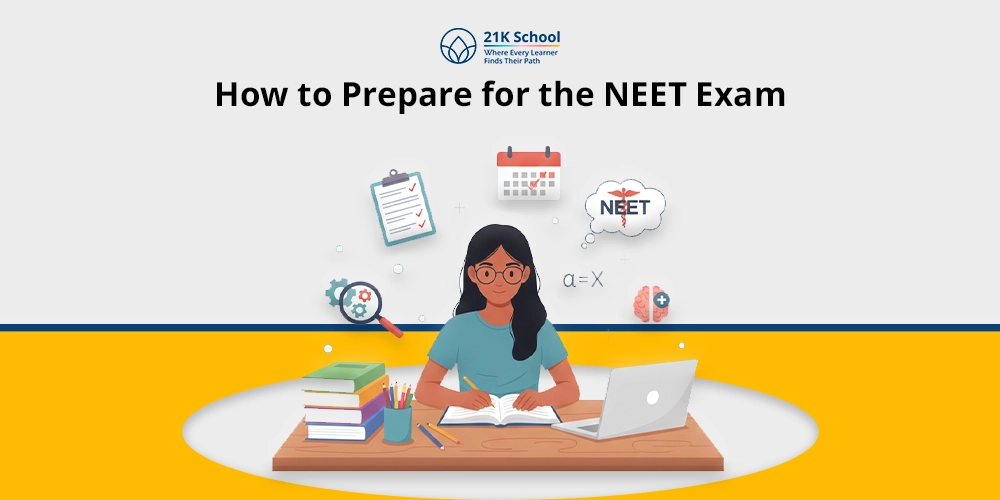
With time teaching techniques need to be modified according to students. This means each student is unique and requires differentiated instructions.
Classroom had a bunch of students but each student was special and different. That’s why teachers need to offer personalized learning accordingly.
In this blog we are going to focus on the power of differentiated learning in today’s classroom. And many more things to make study comfortable for each student.
Let’s begin with quick understanding of the topic:
Contents
- 1 What is Differentiated Learning?
- 2 Introduction to Differentiated Learning in Education
- 3 Role of Differentiated Learning in The Changing Landscape of Education
- 4 Types of Differentiated Learning
- 5 Why Differentiated Learning Matters in Today’s Classrooms?
- 6 Core Principles of Differentiated Learning
- 7 Benefits of Differentiated Learning
- 8 Challenges and Misconceptions Related to Differentiated Learning
- 9 Real-World Examples of Differentiated Learning
- 10 Future Outlook: Differentiation Learning and 21st-century Skills
What is Differentiated Learning?
Differentiated learning is a kind of teaching method which is designed to fulfill the diverse needs of students. The approach is different from the one-size-fits-all model.
Differentiated learning is also known as differentiated instructions which recognizes the students come from different backgrounds, interests and learning profiles.
This teaching approach consists of content, process, product, or learning environment. All these together help students to do their work without any huddle.
“Differentiated Learning—Choose the Way Effective for Each Student.”
Introduction to Differentiated Learning in Education
Classroom is a place where students get experience of different subjects, new skills and learning techniques. Differentiated learning is a helpful approach.
As compared to traditional schooling approaches, advanced learning has become ideal for various schools, reducing learners’ difficulties.
Differentiated learning not only budges the gap between students and teachers but also provides an equitable classroom where every student can thrive.
Various online schools such as 21kschool are adapting differentiated learning and instructions. This helps future generations to better understand concepts easily.
Read more on the benefits of remote learning here.
Role of Differentiated Learning in The Changing Landscape of Education
In the 21st century, classroom study is different from years ago. Due to a combination of students from different cultural, linguistic, and socio-economic backgrounds.
Now education is not just limited to memorising the whole book. It’s all about developing critical thinking, problem-solving techniques and many more.
It’s time to foster the growth mindset to embrace challenges, address the students’ diverse needs, learn from mistakes, improve academic performance and understand the need for differentiated learning.
With the help of the right sort of education and evolved classrooms of schools like 21k school students can achieve better.
For making your children unlock the potential of their critical thinking abilities, try these critical thinking activities for kids .
Types of Differentiated Learning
Differentiated learning or differentiated instructions is an approach to teaching that tailors instruction to meet individual student requirements.
Here’s are four ways to differentiated learning:
- Content – It is a base that students learn. This part contains texts which vary reading levels or provide audio versions of readings.
- Process – How the student analyses the given content. Here students have discussions in small groups, work on activities, or visual aids.
- Product – Here the result reflects how they are doing it. Students may choose to write an essay, create a video, or present a skit.
- Learning Environment – The need for a quiet and calm place to focus on one particular thing.
Why Differentiated Learning Matters in Today’s Classrooms?
One of the most asked questions by parents is whether it is the best option or not. And the answer is yes!
With changing technology teachers work with students in a wide spectrum. People can understand the diverse needs of all students, leading to increased engagement, motivation, and academic success.
Differentiated learning is crucial because:
1. Adapting to Diverse Learning Styles
Each student is different and their learning capabilities are not the same way. Differentiated instruction or learning styles make learning more enjoyable and effective.
2. Promotes Equality
This means students get equal opportunity to excess learning other than traditional methods. It ensures students equal participation and achievement.
3. Boost Students Engagement
Students are mainly comfortable when teachers prioritize them which enhance engagement and learning interest.
4. Upliftment of Teacher and Students
The differentiated learning approach is a backbone for both teacher and students to succeed in the work. This dynamic strengthens the teaching process and academic results.
5. Positive Classroom Culture
By creating a positive environment for students in which every learner is seen as an important part of the classroom.
Core Principles of Differentiated Learning
Here we will understand the core principles of different learning in classroom:
1. Customized Tasks
Create tasks according to the requirements of students. Every task must be engaging and challenging. Educators focus on student progress and adjust tasks accordingly.
2. Assessment and Adjustment
Provide structural assessment which engages students in critical thinking and problem solving techniques. Also ensure to adjust tasks from easy to complex.
3. Flexibility in Grouping
Grouping and regrouping is a must to enhance their learning and thinking ability. This also helps in understanding what’s best for them.
4. Student Choice and Needs
According to students’ choices, their learning pattern and grabbing information demonstrate what’s best. Instructor helps students to meet specific learning needs and preferences.
5. High-Quality Curriculum
Differentiation is all about creating content accessible to all students in different ways. This makes it easy to understand new terms.
Differentiated learning is not a trend to follow, it is a technique to get a better future. As we move forward in future these skills ensure success and help learners to reach their full potential.
Benefits of Differentiated Learning
Have you ever thought about how beneficial differentiated learning is for students? Here’s some top benefits of differentiated learning:
1. Boosts Academic Performance
It improves the academic results of students. By differentiated instructions students can bridge the gap between concepts in effective learning.
2. Enhances Student Engagement
Longer engagement ensures students to engage in the learning process without distraction. It helps in time management and high efficiency.
3. Promote In depth Understanding
This type of learning not only helps in study but also provides diverse learning to understand the chapters in a better way.
4. Builds Essential Skills
Developing the right skills in the 21st century is ideal. From critical thinking, creativity, and collaboration everything in one roof.
Challenges and Misconceptions Related to Differentiated Learning
While learning new concepts, challenges and difficulties are some common pathways. Differentiated learning need:
- Planning and Time: Differentiated instructions need a lot of preparation which is a time consuming task especially for teachers.
- Students and Classroom Management: Managing the whole class divided into multiple groups is a challenging task which demands effort.
- Teacher Workload: Sometimes understanding new concepts and adaptation and preparing increase the workload of teachers.
- Misconceptions: Many people have misconceptions about the real meaning of differentiated learning which can be a struggle.
By overcoming these challenges through understanding, planning and with the help of technology is the best way to educate students.
Real-World Examples of Differentiated Learning
1. Elementary Classroom
A teacher uses different ways to interact with students. By reading in different levels, audio books, and interactive games students interact and engage in a particular concept with interest.
2. Middle School Science
With the help of digital posters, short videos, or written reports students can represent their thoughts on science projects. This helps other students understand easily.
3. High School Maths
Here all the students learned the same concept but tasks are scaffolded at varying complexity levels. It is an ideal way of differentiated learning.
4. Online Learning
It is one of the most used ways till now in which students connect through technology. This provides real-time feedback and adjusts concepts based on students’ responses.
Also Read: The Future of Online Education
Future Outlook: Differentiation Learning and 21st-century Skills
Education and the education system evolve with time. And our role is to accept the changes and go with the flow.
Differentiated learning is a path of success for students in which they are preparing for a rapidly changing world.
Upcoming career opportunities need adaptability, emotional intelligence, critical thinking, communication collaboration and creative problem-solving techniques to achieve growth.
Differentiated learning helps students to tackle new challenges and think critically and achieve academic success.


